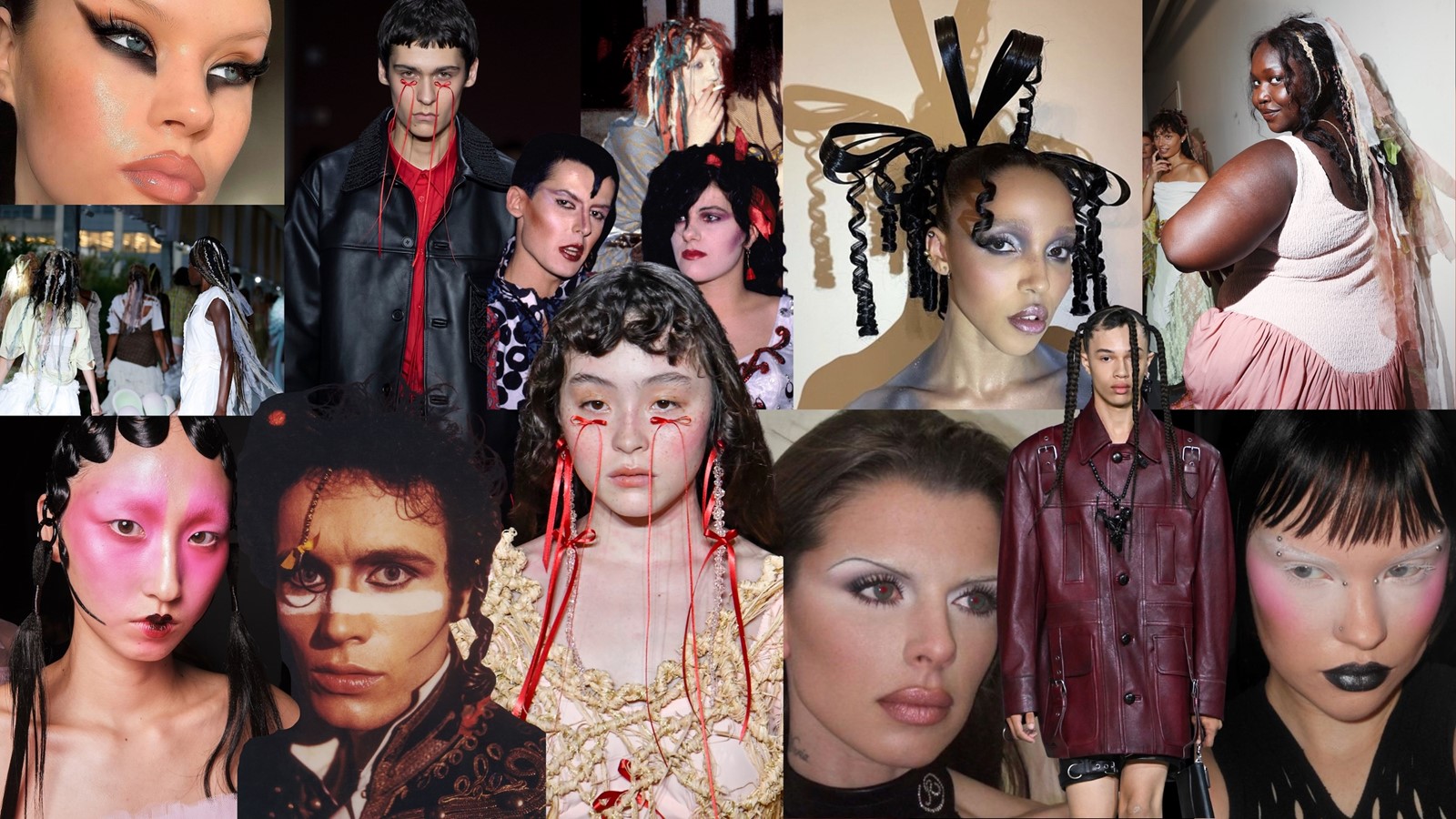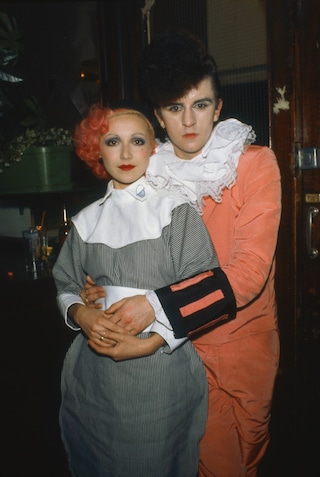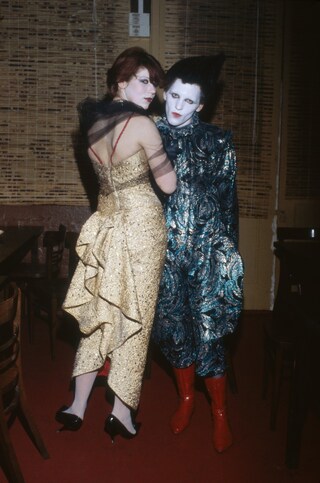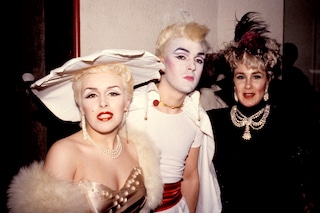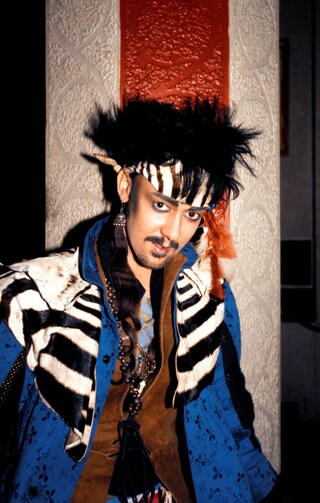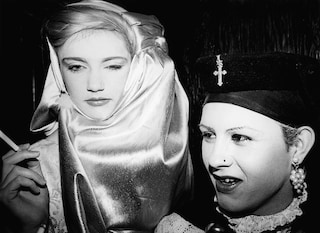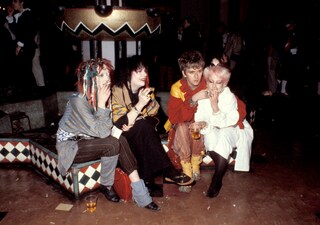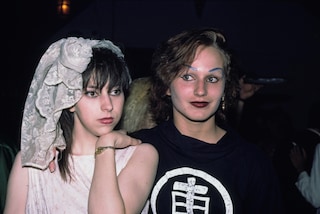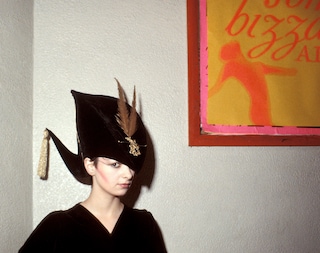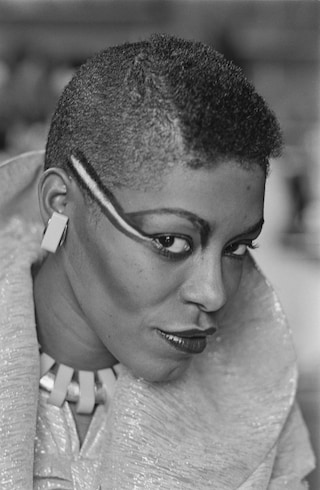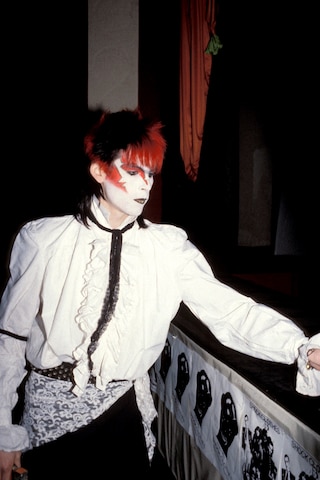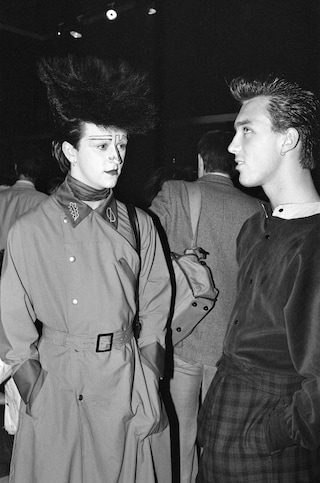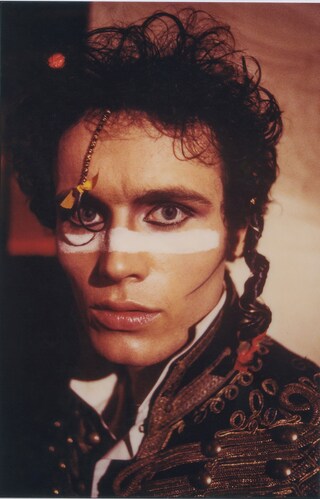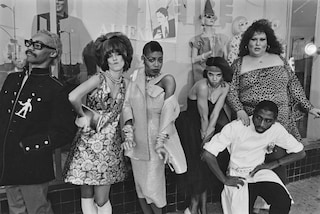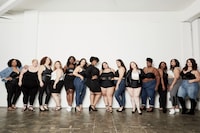Post-girlhood beauty will see the New Romantics re-emerge to combine blush and ribbons while engaging with politics and gender
2023 was officially the ‘year of the girl’ with the blockbuster success of the Barbie movie and endless calls to ‘girlcore’ via girl math, girl dinner and girly-girl aesthetics. In make-up and beauty, this meant pops of pink blush, up-dos adorned with ribbons and bows, strawberry girl aesthetics and a determination to look as doll-like as possible as we glazed ourselves like coquette cinnamon sugar cookies. But these days, the trend cycle is ever-evolving and the glow of girlcore is already starting to lose its lustre. So, where do we go from here? What does the post-girlhood aesthetics look like and what beauty trends are in store for 2024?
One thing’s for certain – the romantic elements of girlcore aren’t going anywhere; but they will be cast anew. Building on the foundation of this hyper-femininity, we are heading into another year of bows, blush and big hair, according to Tom Spratt, head of beauty at Pinterest who says “2024 is the year of bow stacking”. However, the cutesy element of girlhood will be replaced by a more bold aesthetic.
“Pinterest’s ‘Make it Big’ trend shows that 2024 is about taking beauty risks,” Spratt says. “Oversized opulence will take force in the beauty space, so expect looks incorporating bold blushes and bright red lips. Taking inspiration from loud 1980s looks, wavy perms and unique fluffy hairstyles will make a comeback as we dare to go large in the hair space.” This, alongside predictions for the continued rise of skinny brows, heavy blush, bold eyeshadow, graphic liner, gemstones, a black lip and the colour red, show we are moving in the direction of maximalism. It’s extreme. It’s visually overwhelming. The big beauty vibe shift is here – it’s the return of the New Romantics.
The original New Romantics of the 1980s were the futurists of their time, emerging as a reaction to Thatcherite austerity. It was an aesthetic that came from club culture, art and music, but was also heavily rooted in politics and a post-punk rejection of the commodification of protest. The New Romantics wore ribbons wrapped around their hair, drew hearts on their faces, painted their cheeks with exaggerated blush, went punk with heavy eye make-up and maximalist with their hair. They paired gothic glam with ruffles and ribbons, club culture with tailored suiting, the flamboyance of glamour with the twist of androgyny in a Bowie-inspired dedication to gender fluidity as the norm. The New Romantics revelled in androgyny and rebelled against prescriptive gender roles, crucially during the AIDS epidemic, where being queer was met with heightened stigma. As the lyrics to Bowie’s Rebel Rebel decry, “not sure if you’re a boy or a girl”, “we like dancing and we look divine!”
2023, the Year of the Girl, had started with a yearning; a collective need for community and a sense of solidarity in an age of hyper-individualism. Having a mass cultural trend made us feel closer to each other. The months surrounding the release of the Barbie movie was like a never-ending entrance into the girls’ bathroom on a night out – a constant stream of sorority, gushing greetings, matching outfits and compliments. It gave us an easy template for togetherness that functioned both IRL and online (Hi Barbie!).
However, as it went on many of us struggled with the politics; of the feminist-lite, often demeaning and consumerist-centred approach to womanhood in a time where women’s rights across the world are being stripped back. “At what point am I verging on trad-wife territory?” I found myself wondering sometimes as I giggled about not being able to do sums and excused my small portions with a jaunty little jingle. I wanted the lighthearted fun and to anchor myself in a shared experience, but the year of the girl and all its hyper-prescriptive femininity felt at odds with the culture we had been building in the background for years – one intent on defying gender stereotypes, breaking free from the binary and designing something new.
So now that we’ve reclaimed our girlhood and indulged in the play of extreme gender expression, how can we rebirth the girl within into a world that better reflects the way we want to live? One that still revels in romance, but is far more expressive and inclusive in its approach. We want something to unite over – but it should be something that speaks to us all, that allows all that you are.
The New Romantics 2.0 as an aesthetic subculture takes the ribbons and exaggerated blush of hyper-femininity and adds to it an engagement with politics and gender that was missing from our approach to girlcore. The New Romantics 2.0 is the ribbons of ballet-core with the moodiness of soft goth, it’s the messiness of indie sleaze with the theatrics of regency core, it’s the playfulness of Euphoria glam taken to the extreme. Cherry cola lips with punk liner, a dramatic up-do and a painterly white highlight. It’s the camp of Barbie, the hair of Priscilla, the decadence of Saltburn and the period costumes of Napoleon combined to create an aesthetic culture full of character.
The New Romantics were about cultivating an aesthetic as an art form, but also about cultivating personality – crafted through extreme make-up and a theatrical take on beauty. It explored gender fluidity and androgyny, not through the unisex beige of recent years, but with flamboyance and playful extravagance. It took the preceding subcultures of post-war Britain (punk, mods, rockers, hippies) and added a level of exaggeration, of spectacle and frivolity as a form of resistance.
Back in the 2010s, the exaggeration of make-up trends set the tone for beauty in the digital age. In front of selfie lights, endless livestreams and 4K camera lenses, we focussed on crafting faces that stood out in the tiny squares of our oversaturated social landscape; emphasising facial structure with harsh contour, highlight and a cut crease with big lips and defined brows. It was a caricature of our IRL selves – a look designed to mimic and magnify natural features for the digital realm. Then came a rejection of that exaggeration, with a pandemic-enforced return to skinimalism, the ‘clean girl’, fluffy brows, faux freckles and a complexion drenched in dew, gloss and glow.
Now, as we make our way around the trend cycle we return to exaggeration once more, except, this time, with an acceptance and embracing of the performance and the artifice to a really extreme level. “A big part of the New Romantics was marrying elements of stage make-up and circus with the established beauty standards in order to truly subvert,” says make-up artist Julian Stoller. “The use of white face paint is the perfect example. One association we have with a white face is clowning, it’s a very extreme theatrical expression, but the other association calls back to the upper class of the 16th to 18th centuries, when white powdered faces were the epitome of beauty. The New Romantics calls back to those two things – it marries circus with glamour.”
The New Romantics persisted in paradox, defying labels and insisting on duality. It’s masculine and feminine, camp and punk, club rat, romanticism and regency-core combined. Some trend forecasters are hailing 2024 as the year of ‘Me Core’, but to call it so feels reductive. The endless slipstream of micro-trends, cores and aesthetics give the illusion of choice in a tumultuous trend-scape but ultimately just restricts you into conveniently packaged algorithmic subsets where every decision you make needs to be aestheticised.
“I think people are bored and frustrated with constantly having to box themselves off into a specific, identifiable aesthetic or niche – essentially deliberately picking which kind of ‘girl’ to be,” says make-up artist Aoife Cullen. “Even more boring and frustrating is how these aesthetics operate at such swift and rapid paces. It’s overwhelming. I think people are growing out of being caught up in that and are moving to enjoying and exploring multiple things at once.”
Much like our predecessors, we resist the commodification of ourselves. The new New Romantics are fun, crafty, theatrical and playful in an age of the cost of living crisis, global conflict and climate anxiety. It embraces indulgence and opulence with vintage and second-hand clothing at its core – it’s create-your-own-character, a DIY punk mentality and a community defined by a rejection of prescription. “It’s very, very punk,” says Stoller. “And it’s very much disavowing the idea of ‘Euphoria creativity’. We’re interested in truly creating a facade. Euphoria make-up was the most ‘perfect’ version of you with blue liner. With New Romantics, it’s a surreal rendering of you. It’s a painted face, a space for performance and play.”
When your IRL face is now one among many you hold in the digital realm – why not defy and design? Why not play?
